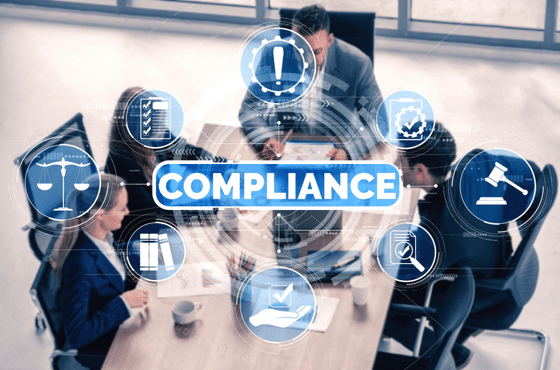
Introduction
Anti-Money Laundering (AML) and compliance are critical components of modern financial systems, aiming to prevent the illicit flow of money that can fund criminal enterprises, terrorism, and other illegal activities. However, AML and compliance are not solely the responsibilities of financial institutions. They involve a complex web of key players, each with specific roles and responsibilities, including Financial Intelligence Units (FIUs), regulators, and law enforcement agencies. In this blog post, we will examine these key players, their specific roles, and how they interact in the larger framework of AML and compliance.
Financial Intelligence Units (FIUs)
Definition and Role
Financial Intelligence Units are government agencies responsible for receiving, processing, and analyzing information related to suspicious financial activities. They serve as national centers for the collection of financial intelligence and are crucial in identifying potential cases of money laundering and other financial crimes.
Functions
- Information Collection: FIUs collect Suspicious Activity Reports (SARs) and other financial data from banks, financial institutions, and other entities.
- Analysis: They analyze this data to identify trends, suspicious transactions, and potential illicit activities.
- Dissemination: After analyzing the data, FIUs share their findings with appropriate law enforcement agencies for further investigation.
Importance
FIUs play a crucial role in bridging the gap between financial institutions and law enforcement. They serve as the initial filter that identifies which transactions or activities warrant further investigation, thus enabling law enforcement agencies to focus their resources more effectively.
Regulators
Definition and Role
Regulators are government bodies or independent organizations that oversee and regulate various industries, including the financial sector. In the context of AML, they are responsible for setting the rules, regulations, and standards that financial institutions must follow.
Functions
- Rule-making: Regulators establish the legal framework that guides AML and compliance efforts.
- Supervision: They oversee financial institutions to ensure adherence to AML regulations.
- Enforcement: Regulators have the authority to impose fines, sanctions, or other penalties on institutions that fail to comply with regulations.
Importance
Regulators ensure that AML laws and regulations are not only in place but are also effectively implemented and enforced. They provide guidelines that help financial institutions understand their roles and responsibilities in combating money laundering.
Law Enforcement Agencies
Definition and Role
Law enforcement agencies are government bodies responsible for maintaining public order and enforcing laws, including those related to financial crimes and money laundering.
Functions
- Investigation: Upon receiving intelligence from FIUs or other sources, law enforcement agencies conduct detailed investigations into suspicious activities.
- Prosecution: If an investigation reveals evidence of criminal activity, law enforcement agencies can prosecute individuals or entities involved.
- Asset Recovery: They have the power to seize and recover assets that are found to be the proceeds of criminal activity.
Importance
Law enforcement agencies are the muscle behind AML and compliance efforts. They take the information gathered and analyzed by FIUs and regulators and use it to take concrete actions, such as making arrests, conducting raids, or seizing assets.
Interactions Between Key Players
The effectiveness of AML and compliance efforts largely depends on how well these key players interact and coordinate their activities. Typically, the process flows as follows:
- Regulators set the guidelines that financial institutions must follow.
- Financial institutions report to FIUs, submitting SARs and other required documents.
- FIUs analyze the data and share it with law enforcement agencies if further investigation is warranted.
- Law enforcement agencies take action, which can include anything from conducting an investigation to seizing assets or making arrests.
- Feedback Loop: Insights gained from law enforcement actions can help regulators refine rules and guidelines, completing the circle.
Case Studies: Real-world Examples
- The Role of the U.S. FinCEN
The Financial Crimes Enforcement Network (FinCEN), a bureau of the U.S. Department of the Treasury, is an example of an FIU that plays a pivotal role in AML and compliance within the United States. It collects SARs, analyzes them, and disseminates this information to law enforcement agencies like the FBI.
- UK’s Financial Conduct Authority (FCA)
The FCA is the regulatory body responsible for overseeing financial markets in the UK. It sets the AML rules and guidelines that financial institutions must follow, illustrating the role of regulators in the AML ecosystem.
Conclusion
AML and compliance are not stand-alone efforts but involve a collaborative approach from multiple key players, including FIUs, regulators, and law enforcement agencies. Each of these entities has a unique role to play in the identification, prevention, and prosecution of financial crimes and money laundering. Understanding these roles and the interactions between these key players is crucial for anyone involved in AML and compliance, from policy makers to compliance officers to the general public.
In a world increasingly threatened by financial crimes, terrorism, and corruption, the need for effective AML and compliance measures cannot be overstated. The collective efforts of FIUs, regulators, and law enforcement agencies are not just essential but indispensable in maintaining the integrity of our financial systems and, by extension, our societies.







